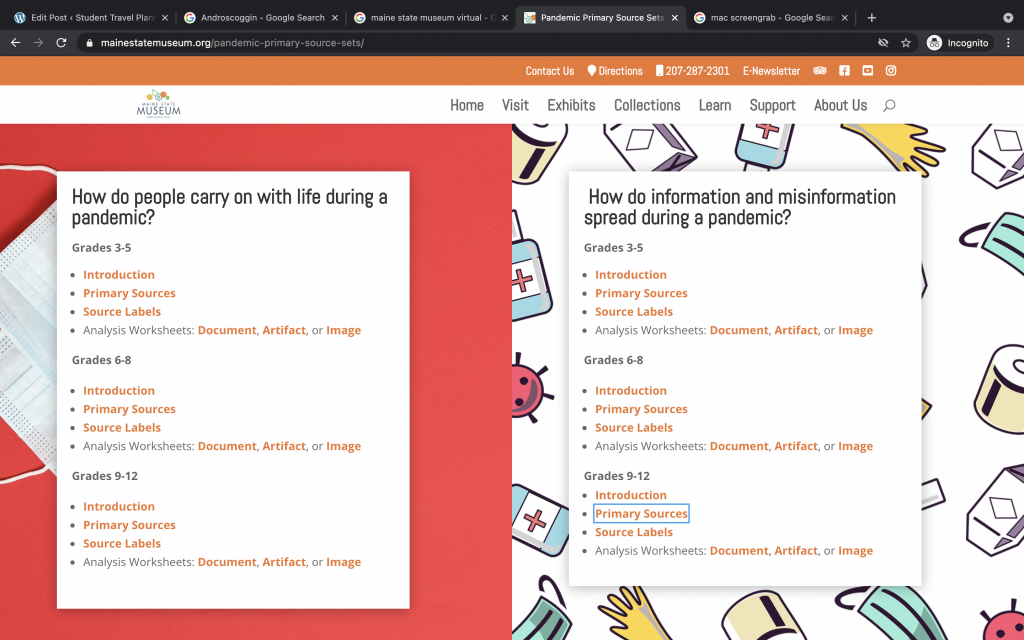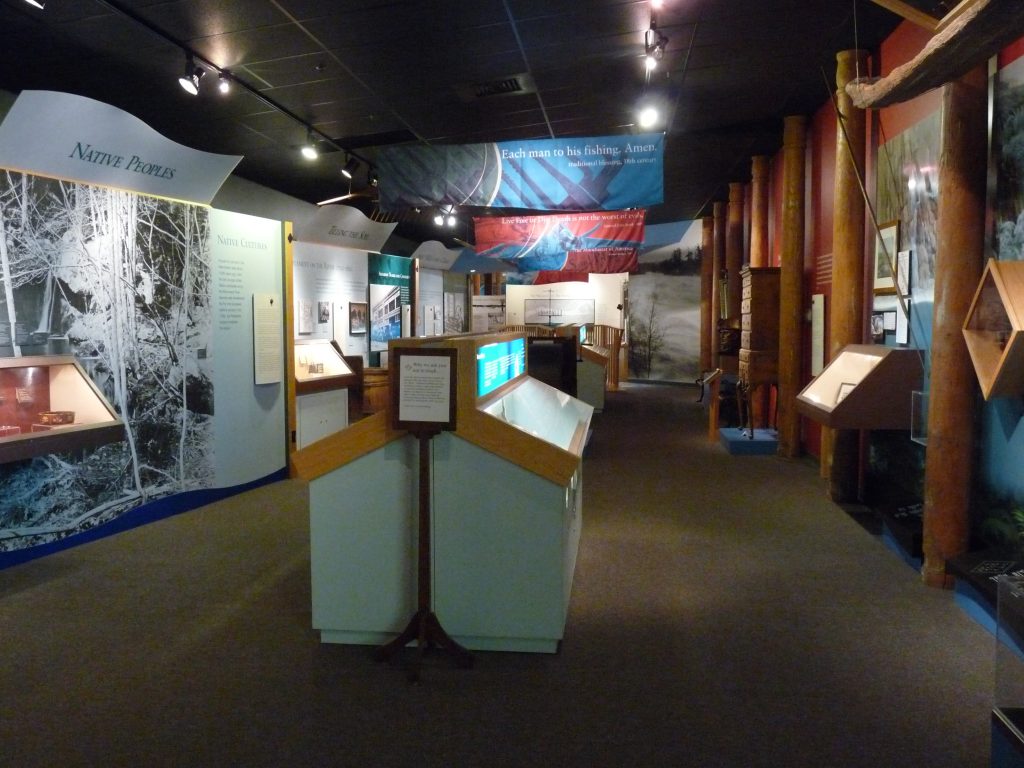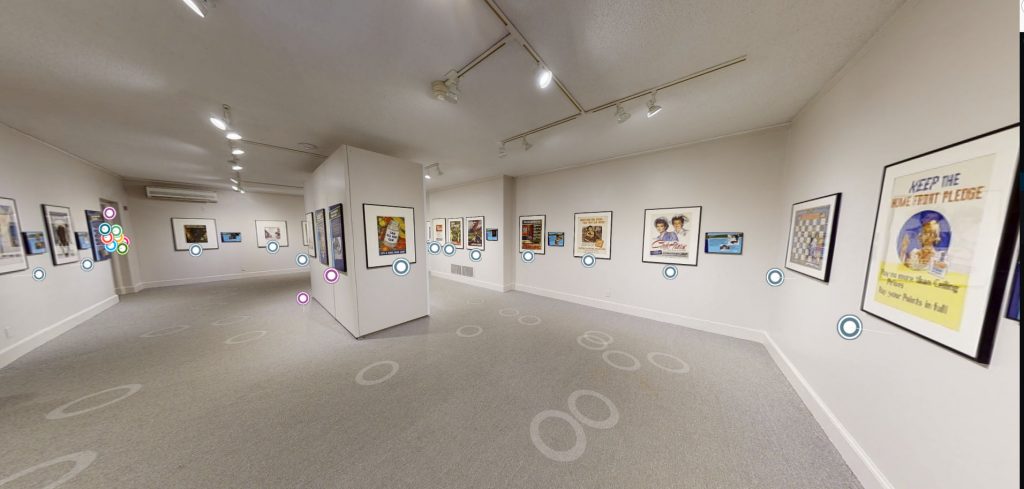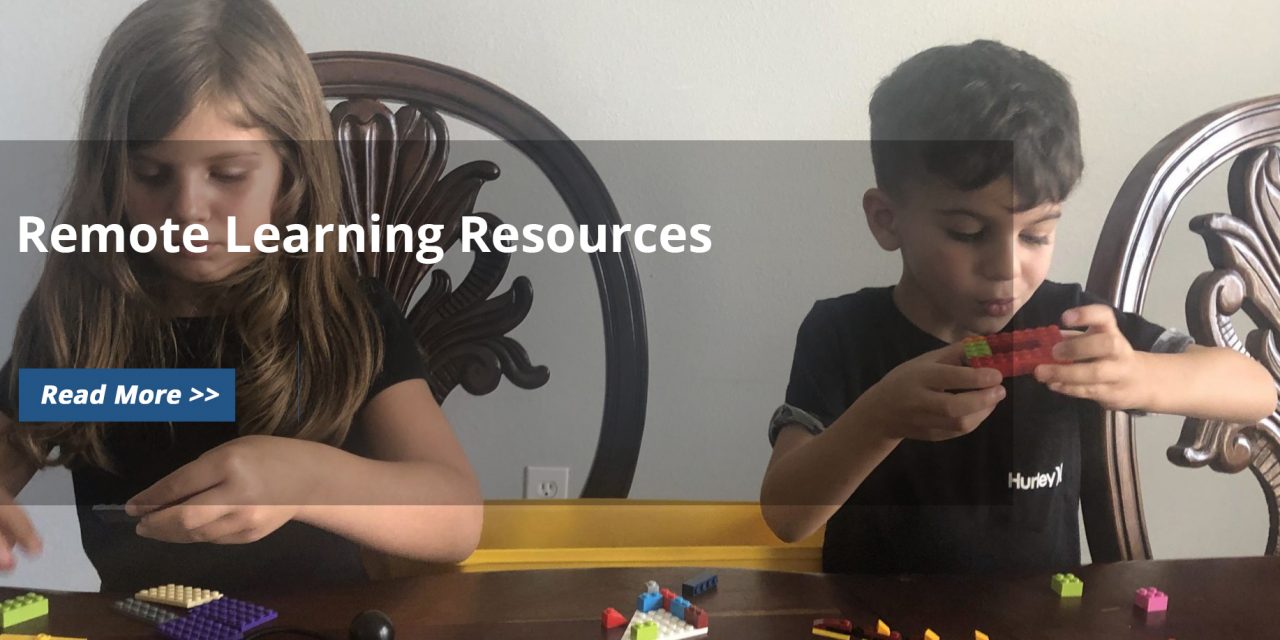New England’s museums, historical societies and important cultural sites present a variety of online programming to keep your students safe and engaged.
Learning and exploring American history while distance learning has become more available and teachable with the help from historical sites and museums in the New England region. With online resources and programs, educators and parents have tools and engaging materials to make their lessons more exciting for students while they learn about their country from a virtual classroom.
Maine
The Museum L-A offers three free mini-exhibits and lesson plans for K-12 grade levels. Their three exhibits cover a textile unit, immigration unit and a child labor unit using virtual tours, interactive maps, fact tabs provided on their website and worksheets. Their textile unit “Our Working Waterway” explores the third-longest river in Maine, the Androscoggin River, and what life and industry looked like along its banks. Your students and children can learn about a dark part of our nation’s industrial history with the “All Work and No Play” child labor unit. In their third mini-exhibit, “Immagration to Maine, Today and Yesterday,” the museum will provide information on the mills attracting immigrants to Maine and the cultural impacts that followed. There is a traveling exhibit currently available called “Weaving a World” coordinated by David Scobey, a Bates College professor, that follows immigrant textile mill workers in Lewiston during the 20th century. The traveling exhibit offers pdf files and images of people at this time that gives a glimpse of what their work life looked like.
The Maine State Museum has a variety of virtual lessons and resources for educators and parents. The lesson plans provided cover a range of grade levels and topics in history. Some provide teaching guides and records for information for student activities. Teacher webinars are available to help educators learn how to use the museum’s resources for their own classrooms. For parents, they include fun at-home activities to explore as a family, like virtual tours of fan-favorite exhibits, activity tutorials, pre-recorded museum exhibit videos and active maps to browse and learn. The Maine State Museum offers both virtual and outdoor scavenger hunts. The virtual scavenger hunt uses pre-recorded videos of different exhibits and activity sheets for students to use during distant learning or for at-home activities. The outdoor scavenger hunt is based outside and around the Cultural Building, State House and Blaine House using a downloadable worksheet found on the museums website.

Credit Museum L-A
New Hampshire
The Historical Society of Cheshire County has a section on their website dedicated to empowered women of Cheshire County. This resource is great for students who are learning about local history and the local people who made history. This section gives biographies of many women from this county that have impacted local and national history in some way along with pictures, facts and related web links that can be read and explored in the classroom, whether virtual or in-person, and through at-home learning.
During a virtual tour, your students can explore the exhibits showcased in the Manchester Millyard Museum. You can choose which sections to view or go through them in the order the website provides. They have an instructional tab on how to view and use the short virtual tour. Choose which exhibits relate to your curriculum topics and help the learning process by incorporating museum descriptions and visuals for your students.
The New Hampshire Historical Society offers short virtual tours of exhibits and artifacts that you can peruse while listening to their historical significance through pre-recorded audio and visuals. They also have age-appropriate activities for children using pictures and visuals of exhibitions like a treasure hunt, a searching game and a scavenger hunt. These short audio clips and visual representations of artifacts bring to life the discovery of these historical items and places.

Credit New Hampshire Historical Society
Vermont
The Shelburne Museum has a “Museum from Home” program that allows for students to explore art history virtually. Their resources provide a creative range and interactive opportunities for virtual learning for students of all grade levels. Their resources include virtually exploring their online exhibitions, Spotify playlists inspired by their online exhibitions and concerts, daily activity challenges to encourage observation of one’s surroundings and creativity with one’s time, coloring pages that took inspiration from their online exhibitions, webinars on a variety of topics from museum staff and art activities for every age.
The Vermont Green Mountain Digital Archive is the collection and collaboration of several partner institutions that provide the public use of Vermont’s digital cultural heritage collections through the Digital Public Library of America. Educators can use the archives for class use and as records on curriculum topics. Students will have documentation of rich Vermont history at their disposal that can help with their distance learning.
Massachusetts
The Freedom Trail is supporting the efforts of history-related learning for educators, students and parents by offering many distance learning programs and resources for all ages and learning styles. Your students can take a virtual tour of different historical sites like the Park State Church, King’s Chapel or the Massachusetts State House while checking out great learning programs with each location. The Freedom Trail offers hands-on resources for students to discover the history in the cities and locations around them. They offer support to teachers with lesson plans, webinars and resource kits you can use to help guide your instruction and get the most out of what topics you’re covering. With most provided resources meeting Massachusetts state standards, they are a great way to get students involved in historical learning while they can’t experience it in-person.

Credit Boston Freedom Trail
Connecticut
The Museum of Connecticut History has created outreach programs for museum educators to bring the museum experience to the classroom. The two different program options dive into Connecticut history with hands-on learning. Their “Connecticut Invents!” program introduces Connecticut inventors and their inventions. This program and the hands-on activities that are included follow State of Connecticut Department of Education standards in history and technology and are most appropriate for upper elementary and middle school aged children.
The Connecticut Sampler program, best suited for third grade and above, is a mix of all things politics, military and industrial in Connecticut’s history. Covering more than 300 years of this state’s history, the program connects the influence of the American Revolution on today’s events. Through activities, role-playing and objects, students will get an idea of what their state’s history looks like and has done for the modern world.
The Keeler Tavern Museum has adapted their most popular school programs into digital learning units for student use. One of their units offers stories based on the families who resided at the museum site for generations, between the 18th and 20th century. The online exhibits allow students to see the times changing through documentation and pictures of the families that called the property home over different time periods and economic changes. The National Connections unit, meant for 4th through 12th grade, will highlight local history like the Battle of Ridgefield. Students will get the chance to identify the ways in which the history of their state contributed to national events through the only inland battle in Connecticut during the American Revolution. They have converted their annual #HandsOnHistory exhibit, for grades two through five, to digital learning. This STEM opportunity for students will showcase the changes and evaluation of work and life for people from the 18th century to present time.

Credit Connecticut Historical Society
Rhode Island
Rough Point Museum has an online opportunity to view and learn about Doris Duke’s seasonal mansion that overlooks the Atlantic Ocean. Now a museum, Duke’s collections of art, house decor and clothing are on display through videos that showcase rooms of the house with museum staff presenting information about Duke’s life and collections. Students will get the chance to view high-priced and prized items that Duke collected and displayed while she resided at this grandiose estate.
The Steamship Historical Society of America has created an interactive website for students to work with the organization’s archives that explore the transition from sail- to steam-powered ships in America during the 19th century. Educators have the opportunity to use lesson plans created by the organization to incorporate use of the archives for students. This website provides a hands on learning experience for your students while learning these topics in their curriculum.






